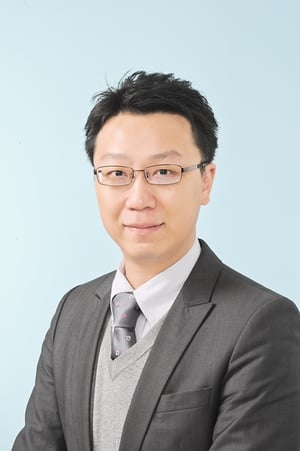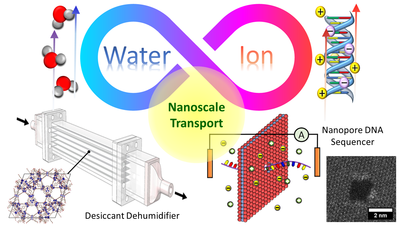Young Faculty / 040
Lecturer Wei-Lun Hsu : Thermal Engineering Laboratory, Department of Mechanical Engineering.

<Biography>
Apr 2019-present Lecturer, Department of Mechanical Engineering, The University of Tokyo
Apr 2017-Mar 2019 Research Associate, Department of Mechanical Engineering, The University of Tokyo
Apr 2015-Mar 2017 Postdoctoral Researcher, Department of Mechanical Engineering, The University of Tokyo
Mar 2015 Ph. D., Department of Chemical and Biomolecular Engineering, The University of Melbourne
Jun 2009 M. S., Department of Chemical Engineering, National Taiwan University
Jun 2007 B. S., Department of Chemical Engineering, National Taiwan University
<About the Research>
Nanopores on atomically thin materials have offered an unprecedented platform for extraordinarily high energy conversion efficiency and ultra-sensitive detection of biomolecules. Nevertheless, our understanding of the properties of two-dimensional materials and transport behavior at the nanoscale is not yet sufficient for designing optimized devices that help to overcome the upcoming challenges in the post-fossil fuel and post-COVID-19 era. Compared with their bulk properties, water molecules and ions possess unique and complex transport characteristics in nanoconfinement. In this regard, we study transport phenomena in individual nanopores and nanoporous media to explore unidentified physical phenomena. Built upon the acquired knowledge, we develop prototypes of next generation energy and medical diagnosis devices. Currently, we are working on:
(i) The development of solid-state nanopore DNA/RNA sequencing devices using two-dimensional materials.
Using the Nernst potential between electrodes when a concentration difference is applied across two-dimensional nanopores, we detect ionic current for biosensing purposes. The presence of DNA/RNA molecules in a nanopore partially prohibits the ion transport, revealing the structural and charge information of the molecules, corresponding to their nucleotide sequence.
(ii) The development of a nanobubble emitter for electronics cooling and ultrasound imaging.
As an external electric field is applied to a nanopore filled with a concentrated electrolyte solution, localized Joule heating gives rise to periodic bubble nucleation in the nanopore. The bubble size and release frequency can be controlled by the pore diameter and applied voltage, respectively.
(iii) The development of next generation dehumidifiers using metal-organic frameworks (MOFs).
Their high water compacity and stepwise adsorption characteristics within a specific range of relative humidity exhibit outstanding dehumidification performance for MOFs over conventional desiccant materials. The investigation of the dynamic behavior of water and the amount of heat released during adsorption in MOFs provides key knowledge for thermal management of desiccant-based air-conditioning systems. 
<Future aspirations>
My research will be devoted to elucidating transport mechanisms in individual nanopores in order to create novel energy and medical diagnosis strategies and technologies. Meanwhile, I will dedicate my efforts to clarify water and ion transport phenomena in nanoporous media for eco-friendly electrochemical cells and desiccant-based dehumidifiers toward zero energy buildings, which will pave the way for the realization of a sustainable society.
<WEB>
Lab:http://www.thml.t.u-tokyo.ac.jp/en/
You May Also Like
These Related Stories

